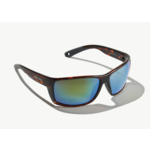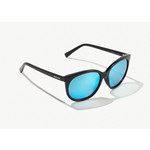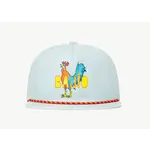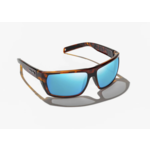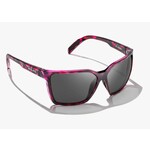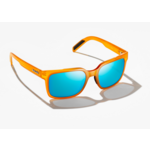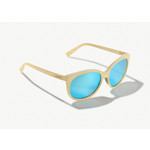PROPRIETARY LENS TECHNOLOGY
In comparison to the top 5 fishing sunglass manufacturers, Bajio blocks significantly more bad blue light than anyone else, and the same or better as the other high performance lenses when it comes to harsh yellow—all while allowing in good light and brilliant color.
In the rainbow of light spectrum, harsh yellow light interferes with color definition, ultraviolet (UV) light contributes to cataract development and skin cancer, and bad blue light scatters when it enters the eye resulting in haze and visual blur. Bajío lenses are purpose built to combat these negative effects from the sun’s rays.
Our eyes have specialized color receptors called cones that only process red, blue and green light (RGB). The science behind making the clearest lenses on the planet is to manage the light that stimulates the cones for optimum visual clarity. Using proprietary LAPIS technology developed by our optical experts, Bajío lenses block 95% of bad blue light (up to 445 nm), the majority of harsh yellow light (at its peak of 580 nm), and 100% of UV light. The result: No more hazy days, no more color interference and better protection of the eyes.
GLARE-BUSTING POLARIZATION
When the sun’s powerful rays enter our atmosphere, they come at us in all directions, reflecting off every object they strike. When these rays hit water, they reflect strongly causing glare which not only interferes with our vision but also makes spotting fish nearly impossible.
Before polarized sunglasses, traditional dark-tinted sunglasses were used to reduce the amount of light in all directions, but the glare was still there. With polarized lenses horizontal light rays are absorbed, but vertical light waves still pass through. Bajío lenses essentially work like venetian blinds to eliminate glare, increase depth perception and contour—so not only do you see things better in the water, but you also see things from further away on the water (a key technology for sight fishing).
LAPIS LENSES™
LIGHT TRANSMISSION
While polarization and bad light blocking are key lens technologies, understanding light transmission and base colors is also important in selecting the appropriate Bajío lens for specific light conditions and fishing environments.
As mentioned above, one function of polarized lenses, is that they limit the amount of light that reaches the eye.
Visual light transmission (VLT) measures just how much light enters the lens versus how much is blocked. If the light transmission of a lens is below 9-9.5%, they are not suitable for driving because they are too dark. Most sunglass lenses start around 10-11% percent transmission. Generally the blues, greens and darker colors will have very low light transmission made for high light situations.
Then there are mirrors. Many polarized sunglasses intended for anglers also have mirror finishes. In addition to looking cool, these finishes also reduce light transmission by up to 2% and help manage annoying reflections from the water.
LAPIS LENSES™
LENS COLOR = CONTRAST
Designed to directly relate to light transmission, Bajío’s polarized sunglass lenses come in a wide range of colors and mirror finishes. The trick is understanding what colors work best for what conditions, or more accurately, what level of contrast is best for your fishing situation. For example, Gray-base colors are going to be very low contrast meaning everything appears as it does naturally, just darker.
In the middle, between low and high contrast, are our Silver Mirror (copper base) and Rose Mirror (red base) lenses. The Rose Mirror lenses are a little bit brown and a little bit red. If you can only choose one pair, this is a solid middle-of- the-road option.
On the other end of the spectrum, are high contrast lenses from the brown color family (which can range from brown to copper to amber to red). The more amount of red color in a lens, the more contrast. High contrast amber, copper, or rose based lenses work great for sight fishing and looking down into the water column to spot fish against the bottom, no matter the color of the water. We don’t build our lenses for watercolor, we build them for light conditions.
LAPIS LENSES™
GLASS VS POLY LENSES
Bajío’s polarized sunglass lenses are made with either glass or polycarbonate. Which is the superior lens material? The short answer is both—each has its benefits that anglers can weigh based off a few factors. Glass is harder and offers mirrors within the lens that cannot be scratched, which is great for wild, action-packed battles. However, glass is heavier. Polycarbonate lenses are impact resistant, scratch resistant and lightweight, which makes a big difference for long days on the water. You can’t go wrong with either, but most anglers have a personal preference depending on what’s more important to them, lightweight or scratch-resistance.


